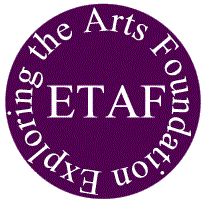Near rhyme and perfect rhyme compared
Another name for the sound of perfect rhyme is true rhyme. Some people
think that a verse is not a "true" poem unless it consists of lines that end
in perfect rhyming sounds. That's why they're called "true." they believe
that poets should always seek to write poems that are built around lines
that end in true rhymes, and that true rhyming sounds are superior to other
rhyming sounds. Nothing can be farther from the truth.
Yes, it can happen that some poets occasionally insert a near rhyme when they would prefer to use
a perfect rhyme because there exist no suitable words that would produce a
perfect sound match that would say what they need to say where they need to
say it. But in most cases, poets employ near rhymes because they produce exactly the effect they're looking for.
Dickenson' poem is a case in point.
Dickenson's poem illustrates how powerful imperfect,
"weak-sounding" rhyme can be. By combining the sound of near rhyme
with the structure of end rhyme, Dickenson imbues this poem with a subtlety
that is entirely appropriate given its subject and message. Her extensive
use of subtle rhymes and structures like these is one of the attributes of
her work that ranks her among our greatest poets.
It would be incorrect to think of near rhymes as
unwanted substitutes for perfect rhymes or as "lesser" rhymes. Poets employ
near rhymes at different
times for a multitude of different purposes. Near rhyme is recognized as a legitimate
poetic technique by poets and audiences that include scholars and critics. Dickenson's poem
it was not death illustrates this point dramatically.
 |
| Lao Tsu |
In this section, The Muse compares the sound of near rhyme with the
sounds of perfect rhyme.
- If you haven't yet explored the sound of perfect rhyme, you may want to
do so now, before you consider this comparison. Do so at the page called
the Sounds Of Rhyme—Perfect Rhyme:
click
here.
structure
Notice the parallels and contrasts between the structure and rhyming
characteristics of near rhyme, masculine rhyme, and female rhyme. For
example, the stressed syllables of all three of these sounds of rhyme begin
with vowel and consonant sounds that are not identical; they end with sounds
that are identical. Similarities like these explain why near rhymes often
sound like perfect rhymes.
However, near rhyme and perfect rhyme have different structures and
rhyming characteristics that account for differences in their sounds. In
particular, these differences explain why near rhymes sound imperfect and
masculine and feminine rhymes sound perfect. One reason they sound
different: the end sounds of stressed syllables in perfect rhymes may
consist of any combination of vowels and consonants, whereas the end sounds
of stressed syllables in near rhymes must consist of consonant sounds.
purpose and role
Near rhymes and perfect rhymes appear in poems for different reasons,
some intended by poets and some unintended by poets:
Intended near rhymes:
- With notable exceptions, near rhymes occur far less commonly in poems
than do perfect rhymes. Sometimes, however, near rhymes are a mainstay of
a poem or of a poet's style. For example, Emily Dickenson is famous for
composing poems in which near rhymes are favored greatly over perfect
rhymes. Her poem it was not death, which is excerpted above, is an
example; it contains only a single perfect rhyme. Some of her poems contain no perfect rhymes at all.
- See more about Emily Dickenson's poem it was not death later
at the page titled XXXX:click here. [link]
- Some poets occasionally inject a near rhyme into a composition that
chiefly contains perfect rhymes. theydo this to achieve the surprise or
variety that comes when near rhymes are intermixed or contrasted with
perfect rhymes.
- Poets also incorporate near rhymes into poems to
generate certain kinds of aesthetic responses. theyknow, for instance,
that some readers are titillated by the very fact that the sound of a
rhyme is imperfect even though at first they believed it to be perfect.
Poets understand that these kinds of experiences can generate intellectual
or emotional pleasures in readers.
- Near rhymes sound more subtle than perfect rhymes. Poets can use these
subtleties to convey ideas and create tones, qualities, and colors.
Unintended near rhymes:
The occurrence in a poem of a near rhyme is not always an event
intended by the poet. Sometimes poets write near rhymes without realizing
that they have done so. For example, they might compose a line to the
effect that the hooch is on the couch without realizing that
the words hooch and couch are located in stressed syllables
and therefore form a near rhyme.
Some rhymes in poems start out as perfect rhymes and turn into near
rhymes because of the ravages of time. For example, the word wind (in the sense of weather) was once pronounced to rhyme with the word
wind (in the sense of winding a ball of yarn). English pronunciation
changed over time so that today wind (weather) rhymes perfectly
with the word sinned but imperfectly with the word wind
(yarn) [link to Shakespeare example]
Unintended perfect rhymes:
The sounds of rhyme between words that nearly rhyme can be so similar
that a reader who is not paying close attention can be unintentionally
fooled into thinking that she has heard a perfect rhyme even when she has
not.
Sonority
Compared with masculine and feminine perfect rhymes, near rhymes are
thought to sound relatively soft and passive; sometimes they sound almost
ambiguous. Here's why:
- The stressed syllables in words with masculine perfect rhyming sounds tend to be the final
syllables, a location that causes their sounds to seem relatively emphatic; whereas the
stressed syllables in words with near rhymes can be located anywhere in the
words, causing many near rhymes to sound less emphatic.
- Words with feminine perfect rhymes contain one or
more non-stressed syllables that
follow the stressed syllables that rhyme, a structure that tends to
emphasize the sonorities at the ends of their words. In contrast, words
that contain near rhyme sounds tend to exhibit sonorities anywhere, a
structure that makes them sound softer and more passive.
- Words with sounds that nearly rhyme exhibit no actual sound
identities, whereas perfect rhymes exhibit perfect sound identities. The sound matches in perfect rhyming words tend to emphasize the impact of
their rhyming sounds compared with the far gentler sonorities of
near-rhyming words, making perfect rhyming sounds seem much clearer, more
precise, and more positive.
The notions of sight rhyme and near rhyme leave some of us in a quandary, a
quandary which goes
like this:
Near rhyme
Near rhyme is rhyme in that occurs when poems are heard. Either the vowels or the
consonants of the stressed syllables in the words sound similar but do not sound identical, as in
down and noon,
years and yours, or bodies and ladies. The brain interprets them as partial sound matches, not as an exact sound
matches. How can sounds match if they are not identical?
Sight rhyme
Sight rhyme is rhyme that occurs when poems are read, not heard.
It consists of one or two of the final syllables (or
parts of one or two of the final syllables) in two or more words are spelled
identically, but when the words are pronounced they sound similar but not
identical, as in alone
and none.
Near rhymes are composed of words that sound alike but do not sound identical.
Sight rhymes are composed of parts of words that are spelled identically but
do not sound identical.
Neither near rhyme nor sight rhyme exhibit
identity of sound. Moreover, sight rhyme can only be detected when it's
read, not heard. Yet, by definition, rhyme is defined as identity of sound.
How can near rhyme and sight rhyme be rhyme?
Well, which is it? Are near rhymes and sight rhymes rhymes, or aren't they?
To assert that near rhyme and sight rhyme are rhyme because their sounds
are similar—to assert that they are partial rhymes—is to trivialize what
happens when they are heard or read. Technically, there is no such thing as
a partial rhyme. The full answer is more complicated than that.
experiencing near and sight rhyme
Here's what can happen when near rhyme or sight rhyme are experienced:
experiencing near rhyme—hearing
When a near rhyme is read aloud, portions of the words
in the rhyme will seem to resemble each other because of the way the brain processes
similar vowel sounds (as in
down and noon) or similar consonant sounds (as in bodies and
ladies). Other portions will not resemble each other.
The brain will detect the mixture of rhyming
and non-rhyming sounds it hears and will sense a mismatch. Even though the words in
a near rhyme will not sound identical when they are pronounced,
the mind will be affected by the notion that a combination of sound matches and
mismatches has occurred. It will analyze these similarities and contrasts
and will generate a
potpourri of mental and emotional reactions, all of which have potential poetic
significance.
Poets can anticipate these reactions and can use them to make points and create effects.
experiencing sight rhyme—silent Reading
When a poem is read silently, the reader who encounters a sight rhyme
will notice that portions of two or more words are spelled alike. His mind "feels"
or senses that a
rhyming match has occurred because it senses the similarity in spelling
among the rhyming words.
Since the brain is busy imagining what all the words in the poem would
sound like if they were heard, it applies the same logic to the words in
the sight rhyme. It accepts the sight rhyme as an identity because of the
visual identity, even though it knows that the words in the sight rhyme
would not sound identical if they were heard.
Even though the sight rhyme is not aural and the matching words are not
heard, detection of this visual identity is rewarded in a manner that is
analogous to the reward that would have been experienced if a sound match
had occurred. The fact that the matching words would not result in an
aural echo if pronounced is irrelevant. Indeed, the fact that the visual
match is only visual and not aural can itself have poetic significance that
can be a source of poetic pleasure and enlightenment, as well.
Poets can anticipate these reactions and can use them to make points and create effects.
Experiencing sight rhyme—hearing others
read aloud
When a listener hears a sight rhyme read aloud by others and does not
follow along by reading, he has no idea that portions of the the words are
spelled alike. He can only hear the sounds that are read aloud.
Assuming that he is not already familiar with the poem, this listener
has no idea that a visual rhyme has occurred; he only hears words that
sound similar because they contain portions that are spelled alike; he
hears sounds that contain rhyming elements but that are not identical.
His reaction would be similar to the reaction he would have if he were
hearing a near rhyme. However, the sounds he hears would be different from
those produced by a near rhyme because the similarities are caused by words
with portions that are spelled alike, not by the stressed syllables of
vowels and consonants. And the strength of the rhyme would not be as great.
Poets can anticipate these reactions and can use them to make points and create effects.
Experiencing sight rhyme—reading to yourself aloud
When a reader who reads a poem aloud to himself encounters a sight rhyme
he will notice that portions of the words in the sight rhyme are spelled
alike. His mind "feels"
or senses that a
rhyming match has occurred because it senses the similarity in spelling
among the rhyming words, just as if he were reading the poem silently.
But at the same time, the reader hears the sight rhyme because he is
reading it aloud. His reaction will be similar to the one he would have if
he heard it read aloud by others. The sounds he hears would be different
from those produced by a near rhyme and the strength of the partial rhyme
would not be as great, but he would realize that a sight rhyme may have
been intended by the poet.
This reader/listener experiences a dual reaction to the sight rhyme. He
is rewarded in both ways at the same time.
In addition, because the experience is both visual and aural at the same
time, he can profit from the knowledge that the sight rhyme may have been
intended by the poet to produces a partial rhyming sound because it is not
a true rhyme. This disparity can itself have a poetic significance that can
be a source of poetic pleasure and enlightenment, as well.
Poets can anticipate these reactions and can use them to make points and create effects.
the quandary resolved?
The fact that rhyme is defined as identity of sound means that sounds
must be heard and must be identical if they are to rhyme. There is no such
thing as a rhyme that is
not heard when a poem is read; the concept is an analogy that represents an abstraction of
the mind.
Do these facts rule out the legitimacy of the notion that near rhyme and sight
rhyme are rhymes?
Despite the names given to near rhyme and sight rhyme, which are
misleading, in a sense both types of rhyme can be heard to match when read aloud;
they can also be heard to mismatch. The similarity and the difference of near rhyme or sight rhyme sounds is the
result of the way the brain processes admixtures of sound, but it it
involves rhyme all the same.
The source of confusion lies with the traditional and accepted names and
definitions given to near rhyme and sight rhyme, and with the technical
definition of rhyme, which is unrealistically limited. These names and definitions, not
the nature of near rhyme or sight rhyme, are the cause of the quandary.
Despite these apparent contradictions in terminology, most poets accept
both the formal definition of rhyme and the formal definitions of near and
sight rhyme, and go right on using all of them. They don't worry about the
names or definitions; they use these rhymes because they work.
In practice, poets know that near rhymes and sight rhymes produce
invaluable kinds of rhyme. They use our reactions to them in all of the
above situations.
Since poets use these kinds of rhyme, you should too. Key in on all
kinds of poetic rhyme, not just on masculine and feminine rhyme, which are
easier to understand and discern; be aware that near rhyme and sight rhyme
are equally important kinds of poetic rhyme and look for them in poems.




